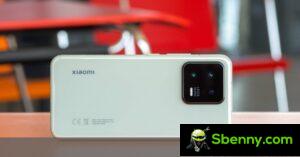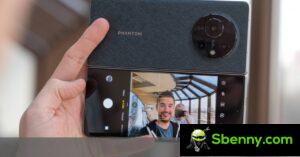Qualcomm unveiled the Snapdragon 8 Gen 2 and among all the performance data there were notes on much improved Bluetooth audio. Here’s the other half of that equation: Qualcomm’s S3 and S5 Gen 2 chips for wireless headphones. There’s also a new platform for wearables, AR glasses in particular, that was unveiled today.
Qualcomm S3 and S5 Gen 2
With the new Gen 2 platform Qualcomm continues its work on Bluetooth LE Audio. The new chips can work in conjunction with Snapdragon 8 Gen 2 to transfer lossless audio from your phone to your ears.
These also support dynamic head tracking to enable spatial audio for a more immersive experience. They also feature enhanced active noise cancellation paired with voice detection: when the headphones hear someone speaking to you, they’ll enable passthrough so you can hear them too, without having to manually disable ANC.

The S3 and S5 Gen 2 chips are also designed with gaming in mind. They feature an even faster low latency mode than before – from 68ms on Gen 1 to just 48ms – and have a voice feedback channel for good quality game chat.
They also support Auracast, which is the Bluetooth version of FM radio. A single transmitter can send to multiple receivers and no pairing is required first, just tune in. This can be used to share music with friends, connect to TVs outside the home (for example at the gym or airport), listen to public announcements in various places, and so on.
Qualcomm S3 Gen 2 and S5 Gen 2 are designed for stereo headphones with lossless audio support and mid-range earphones. Also, they can be used in wireless speakers.
Snapdragon AR2
Qualcomm’s new XR chip was announced alongside the Meta Quest Pro, now the company unveils the Snapdragon AR2 Gen 1 platform – as the name suggests, the focus here is on augmented reality glasses.
Since thin and light designs are a priority, Qualcomm has split the platform into multiple chips. This way the main processor takes up 40% less PCB space. The company has managed to keep power consumption (a problem with multi-chip designs) in check, and claims it can drive the AR glasses using less than 1W of power. The system uses half the power of the older XR2 that powers the Quest 2.

Latency-sensitive tasks are handled on the goggles, high-performance tasks are pushed to a Snapdragon-powered phone or PC or other host device.
Part of the AR2 Gen 1 features include 6DoF and hand tracking. This can be done with up to 9 cameras and an AI accelerator that helps reduce latency. There is an AR co-processor capable of eye tracking and iris authentication, which enables foveal rendering.
For connectivity, Qualcomm has used the FastConnect 7800 system, the same one found inside the Snapdragon 8 Gen 2. This brings Wi-Fi 7 (802.11be) support with a latency of just 2ms between the glasses and the host device.

Qualcomm worked closely with Microsoft during the development of the Snapdragon AR2 platform. The AR2 has garnered interest from many other companies, which are already developing glasses based on the new platform: Lenovo, LG, Nreal, Oppo, Pco, QONOQ, Rokid, Sharp, TCL, Tencent, Vuzix and Xiaomi.







Start a new Thread